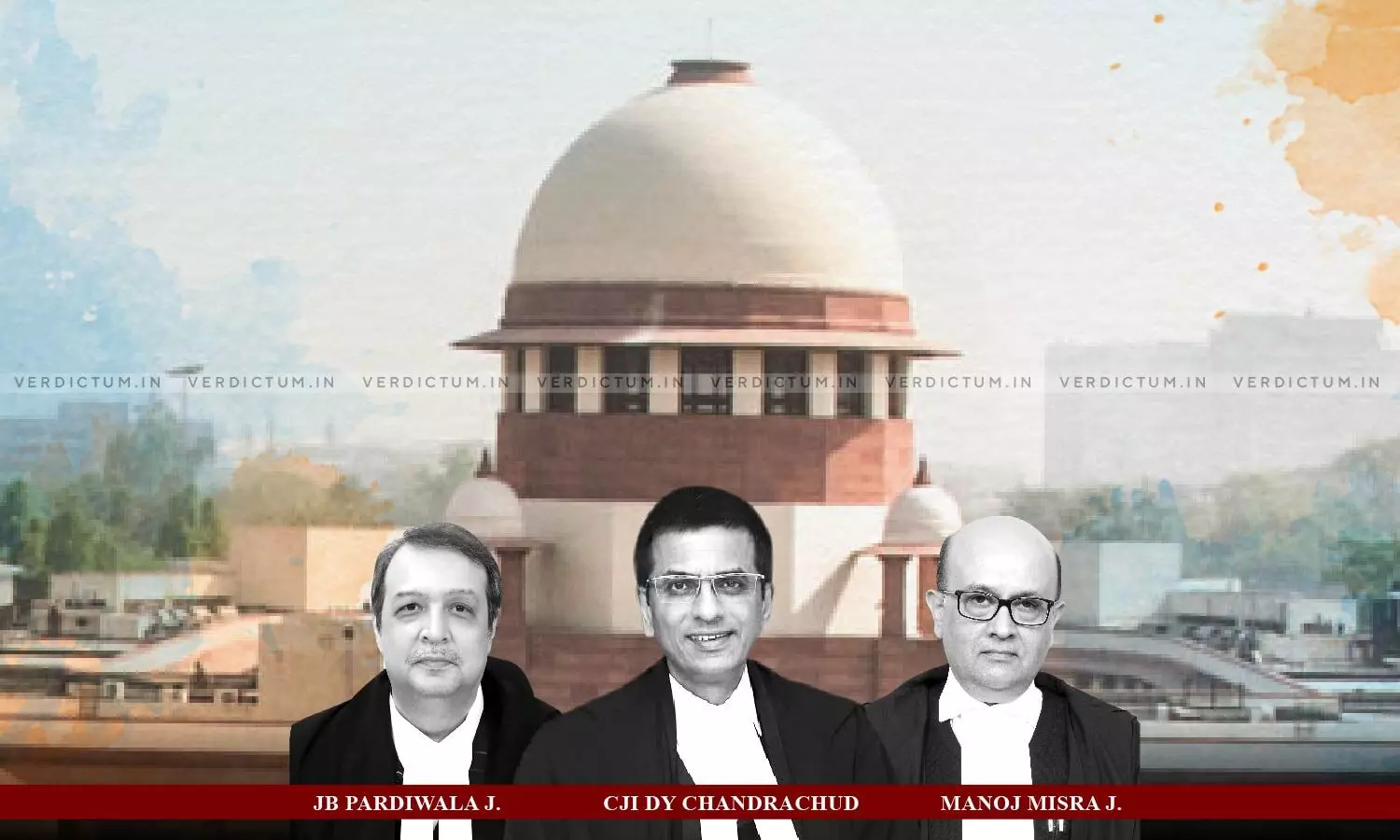
Supreme Court Directs Govt. To Take Final Decisive Call Regarding Cascading Impact Of “Royalty On Royalty” In Calculating Average Sale Price Of Minerals
 |
|The Supreme Court has directed the government to take a final decisive call regarding the cascading impact of “royalty on royalty” in the calculation of the average sale price of minerals.
The Court heard arguments from Kirloskar Ferrous Industries Limited (KFIL) and its shareholder, who have contested the methodology used by the government to calculate royalties on extracted minerals. KFIL challenged specific explanations within the Mineral (Other than Atomic and Hydrocarbons Energy Minerals) Concession Rules, 2016 (MCR), and the Mineral Conservation and Development Rules, 2017 (MCDR), claiming they result in an unjust "cascading effect" on royalty calculations effectively imposing “royalty on royalty.”
The Bench comprising Chief Justice D.Y. Chandrachud, Justice J.B. Pardiwala and Justice Manoj Misra held, “It is possible that at the relevant time in respect of some of the minerals, royalty was being computed without inclusion of the royalty, DMF and NEMT contributions previously paid, however, that does not mean that the Central Government’s power is restricted and that the Central Government cannot alter the mode of computation of royalty. Merely, because the methodology or formula for computation of royalty has been altered from what it was under the erstwhile MCR, 1960 will not make the new mechanism or methodology unreasonable or arbitrary and liable to be struck down.”
Senior Advocates Rakesh Dwivedi, Kiran Suri, Dhruv Mehta and Yashraj Deora Singh represented the petitioners, while Senior Advocate Manish Singhvi and AAG Shiv Mangal Sharma appeared for the respondents.
The petition, filed under Article 32 of the Constitution challenged the validity of these explanations on the grounds that they cause royalties to be calculated in a manner that includes previously paid royalties. The petitioners alleged that the calculation methods under these explanations create a situation where royalty is imposed on royalty, resulting in a cascading effect that compounds the royalty paid each month.
According to the petitioners, the explanations appended to Rule 38 of MCR and Rule 45 of MCDR provided that no deduction from the gross amount would be made in respect of royalty, DMF, and NMET payments. This, they argued, caused previously paid royalties to factor into the next month’s royalty calculation. The petitioners submitted that while coal mining was excluded from such compounding under an amendment issued through a Notification, there was no “intelligible differentia” between coal and other minerals like iron ore, and thus the exclusion violated Article 14 of the Constitution.
The Supreme Court stated that while examining the challenge to the validity of laws relating to economic activities, the courts must be “slow and circumspect.”
The Bench remarked, “A higher degree of deference needs to be shown in such matters, and sufficient flexibility should be given to the legislature and the executive in dealing with economic matters. Complex issues of economic and fiscal nature cannot be construed by any strait-jacket formula or unidirectional approach. This Court has time and again recognised that a judicial hands-off approach must be followed qua economic legislation and that the legislature is to be allowed wide latitude in experimenting with economic legislation, by virtue of it being an extension of the Government’s economic policy.”
Since the MMDR Act and the rules pertain to the extraction, disposal and sale of natural resources which is an economic policy that entails intricate economic choices and has a direct effect on macroeconomics, the Court held that “when it comes to computation of royalty the legislature must have greater play in the joints.”
“The exclusion of royalty, and contributions towards DMF and NMET paid previously for coal but not for other minerals cannot be termed as arbitrary or unreasonable, merely because the computation for one differs from the other in certain aspects. Deference needs to be shown to the legislature in deciding how royalty must be computed in respect of different mineral grades/concentrates,” the Bench explained.
Consequently, the Court directed, “In view of the aforesaid, we grant the respondents a period of 2-months from the date of pronouncement of this judgment to conclude the public consultation process undertaken for amending the MMDR Act initiated pursuant to the Notice dated 25.05.2022 and take a final decisive call in regard to the cascading impact of royalty on royalty in the calculation of the ‘average sale price’ by virtue of the Explanation(s) to Rule 38 of the MCR, 2016 and Rule 45 of the MCDR, 2017.”
Cause Title: Kirloskar Ferrous Industries Limited & Anr. v. Union Of India & Ors. (Neutral Citation: 2024 INSC 848)
Appearance:
Petitioners: Senior Advocates Rakesh Dwivedi, Kiran Suri, Dhruv Mehta and Yashraj Deora Singh; AOR Vipin Gupta, Abhishek Gupta, Tanmaya Agarwal, Naveen Kumar, and Ranjeeta Rohatgi; Advocates S.J. Amith, Maria Carmita Dcosta Mashelkar, Eklavya Dwivedi, Preetika Dwivedi, Vidushi Garg, Saket Sikri, Linette Rodrigues and Ajay Pal Singh Kullar
Respondents: Senior Advocate Manish Singhvi; AAG Shiv Mangal Sharma; ASG KM Nataraj; AOR Rohit K. Singh, Milind Kumar, Harsh V. Surana, Gurmeet Singh Makker and Irshad Ahmad; Advocates Chinmayee Chandra, Sridhar Potaraju, Veer Vikrant Singh, Shailesh Madiyal, Sandeep Singh, Apurv Singhvi, Sarfraz Ahmed Siddiqui, Satya Siddqui, Shalini Haldar and Abdul Mannan